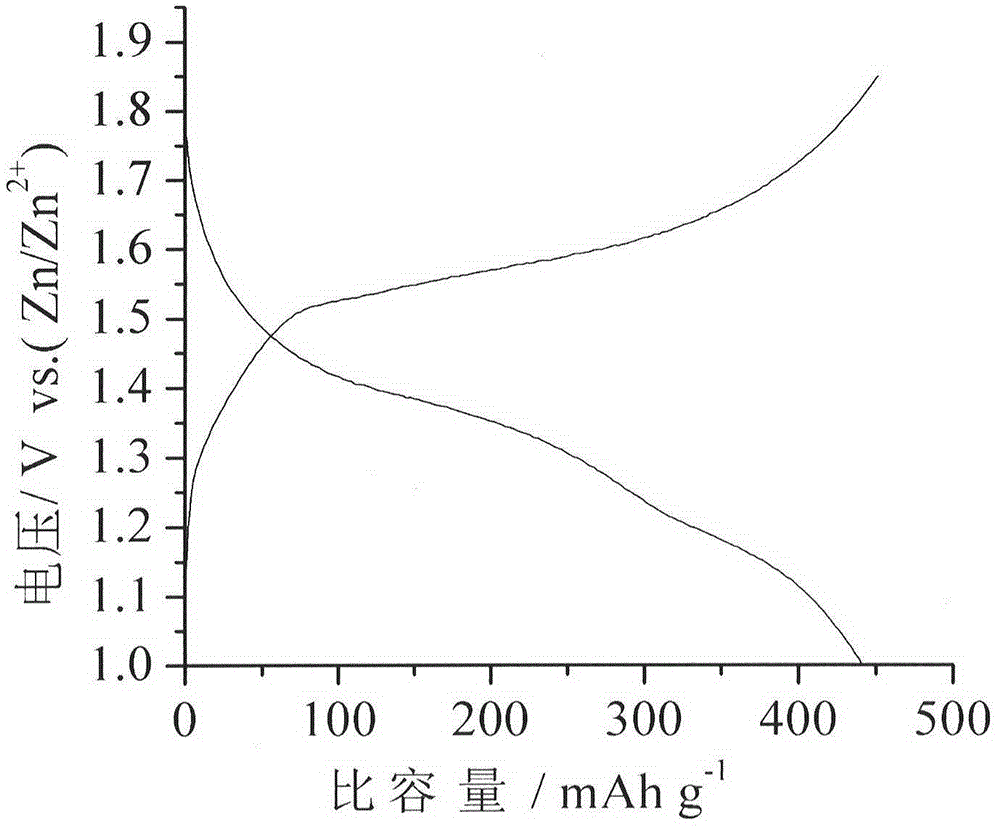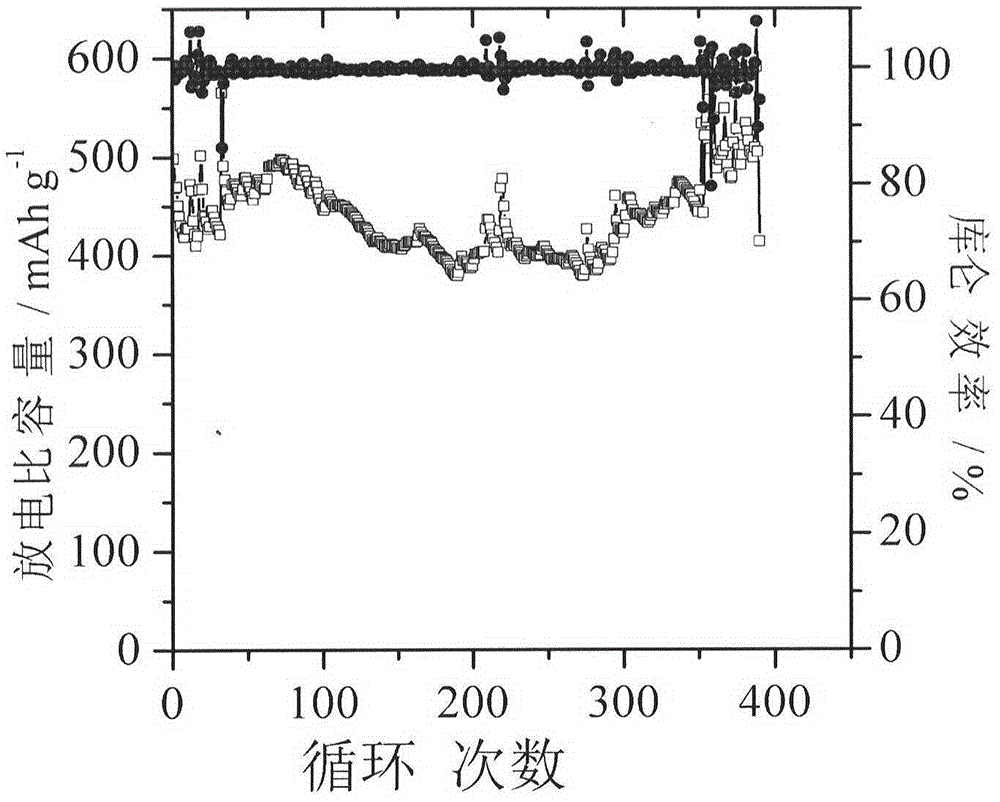Preparation method of lithium ion battery electrolyte solution
A technology of electrolyte solution and lithium-ion battery, which is applied in the manufacture of electrolyte batteries, electrolytes, non-aqueous electrolyte batteries, etc., can solve the problems of poor long-term cycle performance and low specific capacity, and achieve improved overall performance, reduced battery internal resistance, and good battery life. Effect of Overcharge Resistance
- Summary
- Abstract
- Description
- Claims
- Application Information
AI Technical Summary
Problems solved by technology
Method used
Image
Examples
Embodiment 1
[0022] In a dry glove box filled with high purity argon (H 2 O2 6 , After removing water), weigh 1.0 mole; zinc salt Zn (BF 4 ) 2 (After removing water), weigh 1.0 mole; cationic salt type additive Mg(BF 4 ) 2 (After removing water), weigh 0.01 mole; cationic salt type additive NaClO 4 (After removing water), weigh 0.01 mole; cationic salt type additive KClO 4 (After removing water), weigh out 0.01 mole. Take 800 ml of the above mixed solvent, add the 800 ml of the mixed solvent according to the weighed amounts of various salts, stir and dissolve thoroughly, and then add the mixed solvent to make the volume to 1000 ml. That is, the lithium ion battery electrolyte solution of the present invention is obtained, which can be used in organic lithium ion batteries using lithium manganate or lithium-rich manganese-based materials as the positive electrode (the negative electrode is metal zinc or zinc intercalation / extraction materials).
Embodiment 2
[0024] In a dry glove box filled with high purity argon (H 2 O2 6 , After removing water), weigh 1.0 mole; sodium hexafluorophosphate (NaPF 6 , After removing water), weigh 1.0 mole; cationic salt type additive Mg (BF 4 ) 2 (After removing water), weigh 0.01 mole; cationic salt type additive Mn(ClO 4 ) 2 (After removing water), weigh 0.01 mole; cationic salt type additive KClO 4 (After removing water), weigh out 0.01 mole. Take 800 ml of the above mixed solvent, add the 800 ml of the mixed solvent according to the weighed amounts of various salts, stir and dissolve thoroughly, and then add the mixed solvent to make the volume to 1000 ml. That is, the lithium ion battery electrolyte solution of the present invention is obtained, which can be used in organic lithium ion batteries using lithium manganate or lithium-rich manganese-based materials as the positive electrode (the negative electrode is metal sodium or sodium insertion / extraction materials).
Embodiment 3
[0026] In a dry glove box filled with high purity argon (H 2 O2 6 , After removing water), weigh 1.0 mole; cationic salt type additive sodium hexafluorophosphate (NaPF 6 , After removing water), weigh 0.01 mole; cationic salt type additive Mg (BF 4 ) 2 (After removing water), weigh 0.01 mole; cationic salt type additive Mn(ClO 4 ) 2 (After removing water), weigh 0.01 mole; cationic salt type additive KClO 4 (After removing water), weigh out 0.01 mole. Take 800 ml of the above mixed solvent, add the 800 ml of the mixed solvent according to the weighed amounts of various salts, stir and dissolve thoroughly, and then add the mixed solvent to make the volume to 1000 ml. That is, the lithium ion battery electrolyte solution of the present invention is obtained, which can be used in an organic lithium ion battery using lithium manganate or lithium-rich manganese-based materials as the positive electrode (the negative electrode is metal lithium or lithium insertion / extraction materials)...
PUM
 Login to View More
Login to View More Abstract
Description
Claims
Application Information
 Login to View More
Login to View More - R&D
- Intellectual Property
- Life Sciences
- Materials
- Tech Scout
- Unparalleled Data Quality
- Higher Quality Content
- 60% Fewer Hallucinations
Browse by: Latest US Patents, China's latest patents, Technical Efficacy Thesaurus, Application Domain, Technology Topic, Popular Technical Reports.
© 2025 PatSnap. All rights reserved.Legal|Privacy policy|Modern Slavery Act Transparency Statement|Sitemap|About US| Contact US: help@patsnap.com


